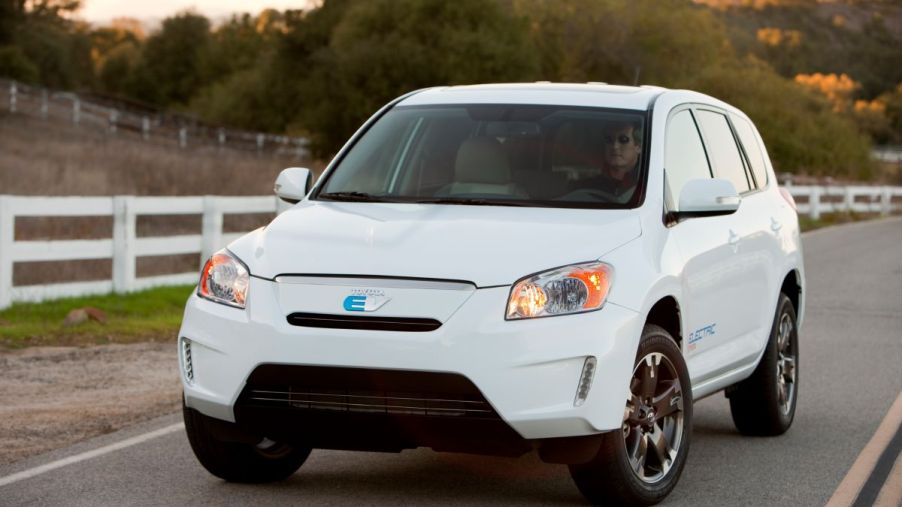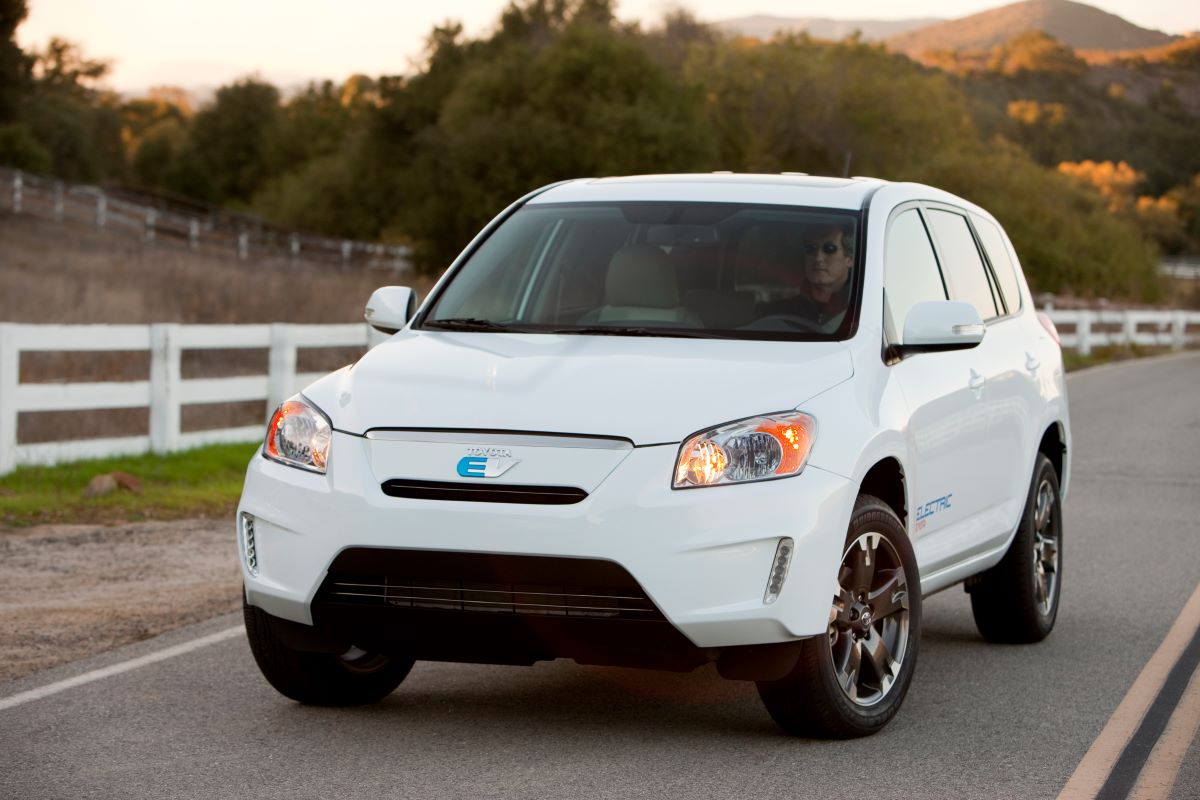
This Tesla Motor Toyota RAV4 Predates Plug-in Popularity and an Innovative California Company Keeps Them Alive
All-electric SUVs are gaining traction nowadays, but they’ve been around longer than most think. In the 1990s, when Chrysler, Ford, General Motors, Honda, and Nissan were drumming up EV platforms, Toyota was working on its own version. Although the second-generation Tesla motor-powered Toyota RAV4 EV predated plug-in popularity—with just 2,600 made— it serves as an origin point for the company’s EV line-up today. MotorBiscuit reached out to California-based QC Charge, which keeps them running and offers a plethora of innovative “American-made EV solutions.”
QC Charge an early purveyor of EV fast charging
After falling in love with the inaugural Nissan LEAF through multiple Canada-to-Mexico runs, QC Charge founder Tony Williams monetized his passion. He began in 2013 with the RAV4 EV in mind, but also other all-electric vehicles like the Tesla Model S and the LEAF. Being one of the few that reviewed Toyota’s EV before it went public, he noticed an item he could improve upon.
Williams thought, “the Nissan LEAF can fast charge; how can you even bring up a car that can’t fast charge?” The LEAF had a range of 75 miles; the RAV4 EV, a long-legged 103. Again, this is the early 2010s, before everyone commuted to work on electric scooters. But the all-electric SUV needed fast-charge capabilities. So, Williams made one.
“There was no 40-amp product that could charge, as the RAV4 had a unique on-board charger,” Williams said. Yet, the Tesla Model S battery pack was 40 amps, too. “The Nissan LEAFs were either 26 amps or 32 amps—depending on which year,” he added, but asserted that he was “pretty keen to get something closer to a 40-amp product.”
“For our very first product, we made an extension cable to plug into the car, based on a 50 or 70-amp Leviton cable,” he explained. “We called it a ‘JLong,’ and we still have that product.”
EV home charging vs. public charging
It’s important to remember that while it took Williams “several years” to develop a fast-charge kit, it was completed in “late 2014” and put into cars the next year. This is at a time when “there were absolutely no fast chargers available in the world, as far as I knew at the time,” he said. Therefore, he cut EV charging time by hours for all—even though EVs weren’t as ubiquitous as today. But QC Charge anticipated their proliferation and created more fast chargers.
“The next thing that we did was the ‘Jesla’ that you could plug into the wall, and depending on which plug you were using, it would modulate the amount of power,” Williams explained. “It could fit half a dozen or more plugs.” Therefore, people could create their own public fast-charge point or at least re-juice their batteries at a friend’s house.
“After that,” he added, “we did ‘Jesla Jr.,'” a 32-amp unit. “We did those projects before the ‘JdeMO,’ which we built to go on the Tesla Roadster.”
But back to the extremely rare Tesla motor RAV4 EV

Although two generations of RAV4 EVs were built, it’s unlikely that you have ever seen one. Roughly 1,500 were built for the 2002 model year, but only 328 were sold to the public. Most were fleet sales to companies like Google and even the City of Los Angeles for local runabouts. The presumed enthusiasm Toyota expected dwindled, so they killed the project.
But in 2010, Toyota minted a deal with up-and-coming Tesla to take a second shot at an all-electric SUV. During the super-secret limited-reviewer debut, when Torrance, California, Toyota personnel took the cover off the car, Williams said, “we were like ‘so, it’s a RAV4. Okay, where’s the excitement? Oh, it’s electric.'” Nevertheless, considering the vehicle’s rarity, many may not know that it came stocked with a Tesla motor.
“I crawled under the car,” Williams reminisced, “and I already recognized that it had two separate battery packs. I wouldn’t have known for a long time, but those batteries were out of the SMART Car that was made two years before. That original prototype had 36 kWh of two separate battery modules out of the SMART, and it had the Roadster motor and the Roadster PEM (Power Electronics Module) under the hood. It even had the Roadster push-button shift, which replaced the RAV4 gear shifter.”
QC Charge fixes Tesla motor Toyotas, and Teslas themselves
QC Charge has “1% of the [RAV4 EV] fleet in the shop on any given day,” Williams said. That might sound like a lot of cars, but only 2,600 second-generation, all-electric, Tesla motor-powered Toyota SUVs were built in its three-year production run. Yet, quite impressively, “approximately 15% of the fleet has our aftermarket quick charge kit,” he elucidated. But despite the RAV4 EV being a California-only car, some examples have found owners elsewhere. A decade on, they’re weirdly ubiquitous.
The shop has worked on Toyota RAV4 EVs from all over the world. Off the top of his head, Williams counted off three in St. John, U.S. Virgin Islands, 10 on an island off the coast of California, and 100 in Ukraine. But “Norway has the most, maybe 200,” he said, adding that it was “an albatross for Tesla and Toyota.”
Normally, Williams is up to his ears in fast-charge kits, EV battery repairs, Tesla motor tinkering, and being (probably) the world’s foremost expert on Toyota RAV4 EV repair. But QC Charge’s lone San Diego real estate is now the hub of expanding operations through the western U.S. He explained they’re looking at moving into the “Los Angeles Basin, San Francisco Bay area, Portland, Seattle, Phoenix, Las Vegas, and Denver.” But in his downtime, what little of it there likely is, he still finds joy in 1,600-mile North American sprints at the helm of his LEAF. He hosts the annual BC2BC (Baja California, Mexico to British Columbia, Canada) EV rally.


